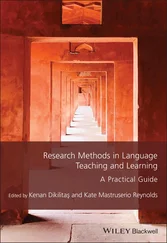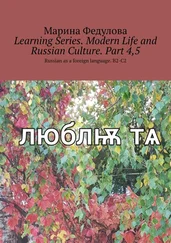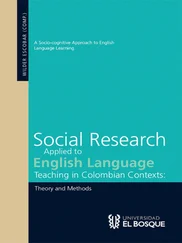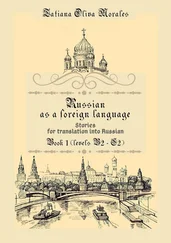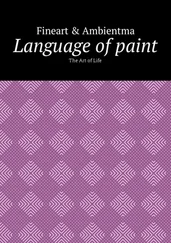He argues that the approach to teacher training which he is advocating means a radical transformation of teacher training, insofar as the one-sidedness of traditional programs up until now have reflected a strikingly limited perspective of what a teacher needs to learn. In discussing previous efforts to reform teacher education he complains that no one ever had anything new to say,
except, of course, to assert that a more solid grasp of subject matter (taking more courses) would improve the quality of teaching. In some unexplained way the knowledge of teachers would stimulate the hearts and minds of students. There was absolutely no recognition that maybe teaching required more than a solid grasp of subject matter, that maybe the teacher as performer needed to be analyzed and judged in regard to the selection and preparation of teachers. In brief, teaching was a relatively simple affair devoid of artistry.132
Although he regrets that due to his advanced age (he was 80 years old when he wrote this book), he cannot develop and implement any concrete proposals, he remains certain that the models for such future programs can be found in the other performing arts. In this context he also considers the significance of the continued professional development of teachers and the potential value of in-service programs. In the crises which have engulfed so much of the teaching profession he sees an imperative need to begin to include this dimension of training into such programs. Towards the end of the book he reflects at length on how he gradually came to the realizations which he has expressed,
I did not dream up out of whole cloth my conception of teaching as a performing art. It was forced on me after sitting scores and scores of classrooms observing teachers, most of whom seemed to view their students as empty vessels that needed to be filled, directed and controlled. It was a one-way street. (…) Teachers taught the way they were taught, their performing style and repertoire were in a very narrow range. Students performed the way they thought the teacher expected them to behave.133
I regard what I have said in this book as glimpses of the obvious, but it took me years to truly take the obvious seriously.134
Throughout Sarason’s highly critical examination of pre-service and in-service training, there is an element of urgency based on his heartfelt recognition that the dimension of teaching education which he has addressed is imperative for teachers and pupils. Along with this sense of urgency, there is also a sense of anticipation resulting from what he considers the far-ranging potentials in affecting change in teachers through learning from the models of the other arts. At the end of a long and distinguished career, he has elucidated a clear set of pressing and creative challenges for future educators to confront. The development and empirical study of a new approach to in-service training of English teachers which is the focus of this study can be considered as an attempt to concretely address the questions and issues which he has so strongly raised.
1.3.8 Teaching as Improvisational Performance – R. K. Sawyer
In a series of articles in which he has critically evaluated the widespread propagation of scripted teaching methods, R. Keith Sawyer has offered a vision of teaching as a form of collaborative improvisation in which the teacher and pupils co-create classroom discourse.135 Arguing that research has demonstrated that one of the defining characteristics of outstanding teaching is the ability to react flexibly to the dynamics of classroom interaction, he has criticized recent formalistic approaches to teaching in which this element of teachers and pupils improvising together in the classroom is discounted.
In the context of explaining his understanding of collaborative learning, he draws clear parallels with the methods of improvisational theatre work:
In improvisational theatre, a group of actors creates a performance without using a script. Some groups specialize in short skits only a few minutes long, and others specialize in fully improvised one- or two-act plays of an hour or more. These performances emerge from unpredictable and unscripted dialogue, on stage and in front of an audience. In a similar way, an effective classroom discussion emerges from classroom discourse, and is not scripted by the lesson play or by the teacher’s predetermined agenda.136
In his discussion of the potential significance of such improvised classroom discussions for learning, Sawyer draws on constructivist thinking in which learning is viewed as a creative and improvisation process, co-created by teacher and the pupil. Moreover, he establishes connections to recent socio-cultural theory in which the overriding significance of the activities and processes within the entire group are emphasized. In the end, he draws conclusions as to what this could mean for teaching:
The socio-cultural perspective implies that the entire classroom is improvising together; and it holds that the most effective learning results when the classroom proceeds in an open, improvisational fashion, as children are allowed to experiment, interact, and participate in the collaborative construction of their own knowledge. In improvisational teaching, learning is a shared social activity, and is collectively managed by all participants, not only the teacher.137
In discussing the necessary attributes of the teacher as improviser, Sawyer stresses the importance of a high degree of subject knowledge in order to be able to respond spontaneously and creatively, and contrasts this broad knowledge to the narrow range of materials offered in pre-planned lesson scripts. He then describes what he considers the decisive skill of managing a group improvisation, requiring a fine sensitivity to finding the balance between the need to maintain pre-existing structures and leaving enough openness for collaborative learning to emerge.138 After elucidating the connections which he sees between the collaborative skills required in the classroom and what is developed through improvisational theatre, he proposes that teachers be trained in those techniques that are taught to aspiring improvisational actors. Arguing that there is already a body of expertise in these areas, he sees a wide range of possibilities for teachers learning from what has already been developed and published for the training of actors.139 He notes that there have been in recent years a series of summer programs and workshops based on different improvisational exercises and mentions the positive program assessment which these organizations have received from participants.140 He argues for the systematic development of such programs in order to determine the most effective manner of integrating such work into teacher education.
Sawyer has succeeded in drawing together research from different fields to construct a basis for his arguments. In his proposal that teachers practice those kinds of exercises which aspiring improvisational actors use in order to concretely develop these skills, he has introduced a clear perspective into teacher training. There are a number of connections that can be drawn between many of his ideas and the conceptual basis of the research study which will be developed in the ensuing chapters, although these concepts were developed independently of each other. The open questions which he has posed regarding the need to find the best ways to incorporate these skills into teacher training, along with his call for empirical research to be conducted in this field, closely match the intentions of the present study of the clowning courses.
In considering both the long European and Anglo-American traditions of viewing teaching as an art, it is striking that the reasons given for adopting this perspective have not substantially changed over time. It appears to be intrinsic to teaching itself that regardless of widely divergent historical and societal circumstances, those attributes such as creativity, flexibility, sensitivity, fluidity and expressivity which have been deemed to constitute the basis of artistry in teaching have always been seen as decisive. However, although many of the exact same educational arguments for and against this view of teaching can still be heard today, these historical parallels have generally not been taken into consideration in contemporary thinking. Strikingly and unfortunately, this lack of historical reference is even typical of many of those contemporary authors who have tried to advance the concept of teaching as an art. A standpoint exclusively focused on contemporary issues can be seen as being theoretically appropriate to the advancement of the concept of teaching as a science in which progress is generally viewed as linear. From this perspective, writings from previous times are of primarily historical interest. However, the framework of viewing teaching as an art clearly implies another understanding of the potential relevance of past thinking in a contemporary context.
Читать дальше

